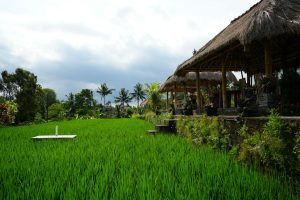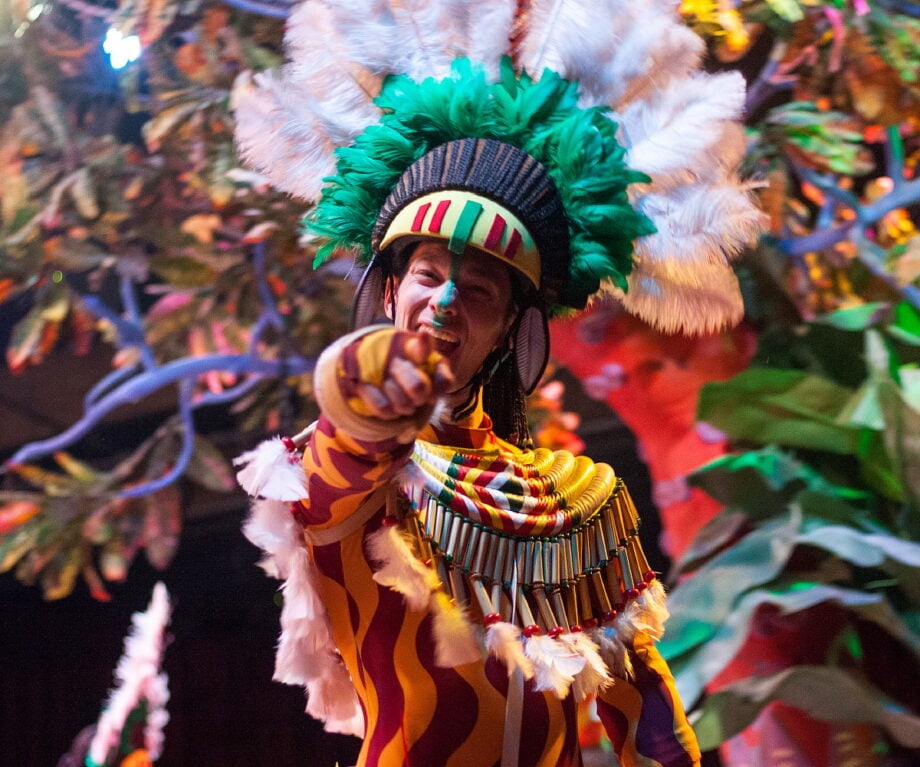
While it’s tempting to think of Carnival as South America’s version of Mardi Gras, the celebration is more like the World Cup, New Year’s, and the 4th of July all rolled into one!
Dozens of countries around the world celebrate Carnival, but it’s in Latin America where they explode in a spectacle of color and texture so vivid that they feel like a dream. It’s here where Catholic traditions brought to the New World by European colonists blended with the traditions of indigenous peoples and the descendants of enslaved Africans to imbue the celebration with a particular style and atmosphere, always featuring spirited dancing and music. Still today, the continent’s opulent parades and high-energy parties keep fun-loving locals and travelers alike dancing till dawn.
But with so literally hundreds of Latin Carnivals to choose from, it’s hard to know which to attend. Fortunately, though, there’s a celebration for just about everyone. So — whether you love music, history, food, or parades — you’re sure to be covered by at least one of what we’ve found to be the seven best Carnivals in South America. We therefore invite you to simply read on…
Rio de Janeiro, Brazil: Quintessential Carnival
We have to begin with the most famous Carnival on the planet: Rio de Janeiro. As the world’s largest Carnival, Rio attracts some 5 million partygoers for more than a week of flamboyant, explosive, samba-shaking celebration.
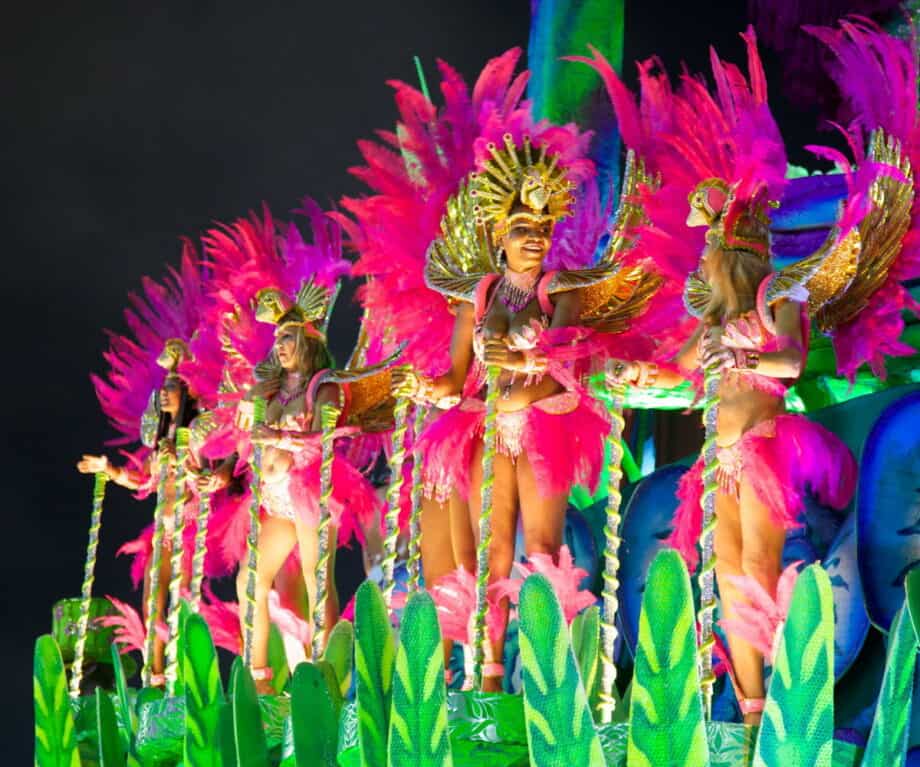
However, the various parades held in Rio differ from those found elsewhere in South America. The Rio Carnival is less an expression of indigenous traditions under the guise of a religious holiday and more a competition between Samba schools (and a great reason for the whole city to party).
Over 70 participating Samba schools compete in parades as part of a contest that takes place along the Sambadrome, which is a grandstand-flanked parade runway with a capacity of around 70,000 spectators. The competition is taken very seriously; as each samba school takes a full year to prepare to compete in different categories such as costumes, performance, best float, theme, and music. The winning Samba school is then heralded in with its very own parade during the second weekend of Carnival.
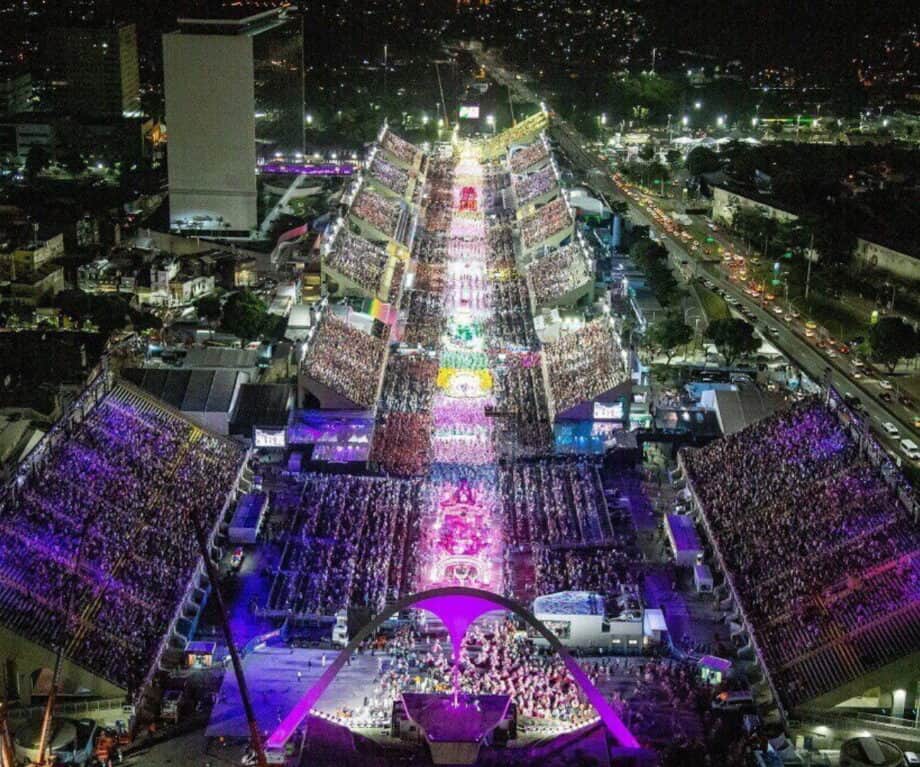
70,000 spectators at Rio’s “Samba-drome”
But the fun doesn’t stop there. Every weekend in February the streets of Rio are alive in a colorful, chaotic, and debaucherously wild celebration that’s full of music, festivities, and over 500 blocos (“street parties”) held all over town. Then too, more urbane revelers delight in classical masquerade balls, the most famous being the “Magic Ball,” held at the Copacabana Palace Hotel. In short, the Rio de Janeiro Carnival is the Carnival of all Carnivals and shouldn’t be missed.?
The Oruro Bolivia Carnival: A photographer’s dream
Carnival in Oruro is Bolivia’s biggest tourist attraction and has centuries of history. Its color-filled festivals have a dual goal, as the Catholic tradition aimed at venerating the Virgin Mary of the Socavon is seamlessly interlaced with sacred Andean traditions intending to appease the evil spirits roaming the land. This artful merging of traditions is exactly why the vibrant Oruro Carnival received the recognition as Masterpiece of the Oral and Intangible Heritage of Humanity by UNESCO.

In the Carnival of Oruro, the most opulent Carnival costumes are a feast for anyone looking to experience a true cultural immersion. It’s a cultural anthropologist and photographer’s dream as the streets of Oruro explode with parades of interpretive folk dancing in devil costumes, known as the Diablada. Between the beautiful handmade costumes, music, and dancing, there are also offerings made to Mother Earth, a mine-shaft virgin, and to El Tio (“Uncle”), who is believed to protect the workers of the local silver mines.
The locals go big on the celebrations through the use of masks, textiles, and colorful embroidery, so expect to see thousands of them wearing horned masks, velvet capes, and shimmering breastplates. In fact, the festival features a 2-mile procession with anywhere between 40,000 to 70,000 dancers and musicians performing to half a million attendees for up to 20 straight hours.

For any traveler who plans on joining in the festivities, be aware that – though no longer permitted— a few overzealous partygoers might still use water balloons, water pistols, and party spray foam to celebrate the good days to come. So, just in case you don’t want to get drenched, keep in mind that street vendors will be selling colorful ponchos.
Montevideo Uruguay: Under the tourist radar (and thus authentic)
With all the hype surrounding Brazil’s Carnivals, few travelers are aware of the Montevideo Uruguay Carnival, which has ensured that this celebration has remained perfectly authentic. Extending for up to 50 days, the Uruguayan capital vibrates with street shows and samba parades in what is the world’s longest Carnival.
Another interesting feature of Montevideo’s Carnival is its Murgas. These are shows in which local artists, dancers, and comedians perform in public spaces all across the city on neighborhood stages called tablados. In these murgas, local music and theater ensembles are known for their satirical humor as they typically mock current events and slam popular films, novels, and songs.
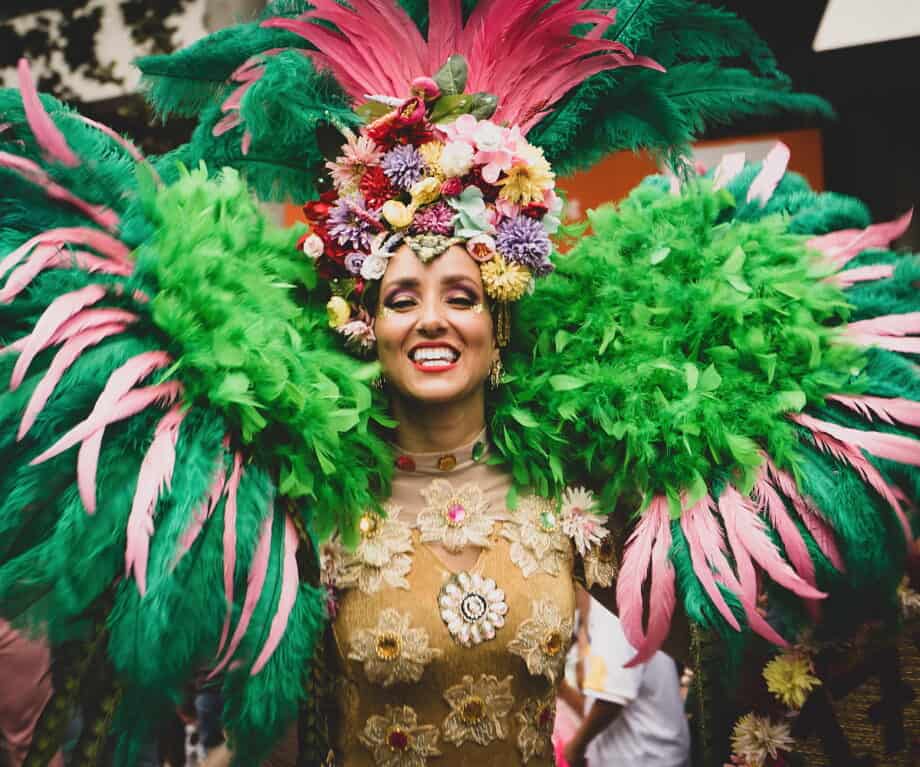
Nonetheless, the undisputed highlight of this Uruguayan celebration is the Desfile de las Llamadas (“the Parade of the Calls”), a captivating mixture of African slave culture and European influences. The parade is an expression of “candombe,” a form of music that has been declared Intangible Cultural Heritage of Humanity by UNESCO. It is an amazing call-and-response rhythm between three types of drums, that has been played by Afro-Uruguayan drummers over many generations. All of this translates into a vibrant parade of dancers, musicians, floats, pantomime troupes, stilt-walkers, and up to 2,000 energetic drummers parading through frenzied streets lined with cheering crowds.
Salvador Brazil’s Carnival: The world’s biggest street party
Though Salvador Carnival is Brazil’s second biggest and second most famous Carnival — attracting a “mere” 2.5 million people — it has officially been cited in the Guinness Book of Records as being the world’s biggest “street party” (whereas Rio’s Carnival features more club parties and the famous Samba Parade).

For 16 hours a day, for six full days, this Afro-Brazilian Carnival is fueled by the blaring sounds of the region’s famed trios elétricos. These are trucks or floats equipped with high-power sound systems and stages with live bands or DJs aboard. These mobile platforms drive through the city while playing regional “Axe” music for crowds of people who party, drink, and dance the days away.
As a visitor, you too can dance in the streets along with the crowd, wearing whatever you want. Though the main performances can be viewed from the sidelines, if you prefer, you can watch the action from a camarote (a VIP cabin) situated along the parade’s avenues. Then too, if you’d like to be part of one of the three main parade circuits, you have to buy a pass and an identifying t-shirt from one of the blocos (a group participating in the parade).?
Gualeguaychú Argentina: “The Carnival of the Country”
While Carnival is not as widely celebrated in Argentina as it is in other parts of South America, there’s one small Argentine city known for its pre-Lent festivities: The city of Gualeguaychú, where celebrations have been held since the 19th century.
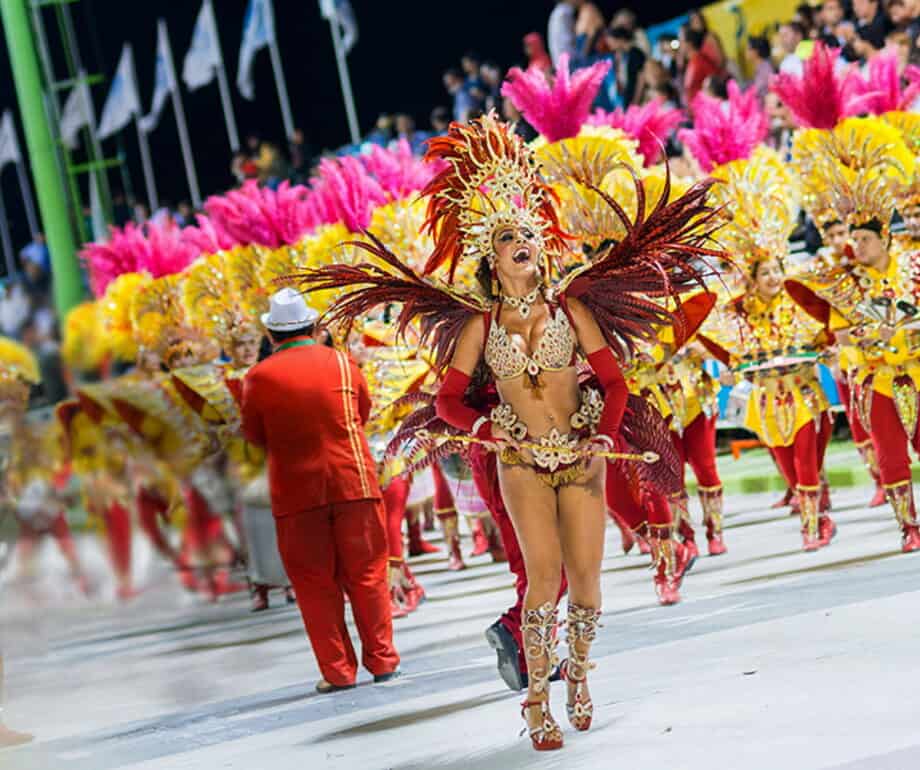
Nicknamed “The Carnival of the Country,” this massive and relentless six-week-long affair is replete with dance competitions comparable to those seen in Rio. Expect bountiful feathers and glitter on attendees who opt to dress in costume as they parade through the city’s Corsódromo stadium, effectively the Argentinean version of the Brazilian Sambadrome. What’s especially notable is that the stadium accommodates up to 40,000 attendees, a surprisingly large facility for a city of only 100,000.
During the parade, rhinestone and feather-clad groups of dancers perform to the tunes of rhythmic samba music. The procession is accompanied by 12 larger-than-life floats each measuring up to 20 yards in both length and height, and a whopping 10 yards wide. Dancers are members of one of five official comparsas (or groups) of which only three may perform yearly. Like their foreign counterparts, though, all of the dancers prepare costumes and choreographies all year round.
Similar to its neighboring country of Uruguay, this Argentine Carnival features murgas, which in Gualeguaychú consist of music bands that assemble dancers, musicians, singers, and circus jugglers. The performances here are usually anti-establishment satires against national and international characters and critiques ridiculing everything from fashion trends to corny movies.?
Barranquilla Colombia’s Carnival: A melting pot of cultures
Attracting close to two million people, the largest Carnival outside Brazil takes place on Colombia’s Caribbean coast in the sultry city of Barranquilla. This old long-standing Carnival was designated by UNESCO as one of the Masterpieces of the Oral and Intangible Heritage of Humanity as it is one of Colombia’s most important folkloric celebrations, dating back to the 19th century with many traditions coming from the indigenous peoples who used to celebrate the coming of spring.
In more recent times, the city’s location in the Caribbean has made the Barranquilla Carnival a melting pot of cultures, heavily influenced by the music and dance of indigenous people and African slaves from the 18th century, while also fused with native religious ceremonies and Catholic beliefs.

One of the celebration’s highlights is La Batalla de Flores (“The Battle of Flowers”). This is the oldest and most popular parade, consisting of a six-hour show of live music, folk dancing, fire breathers, and of course, floats. This sprawling pre-Lenten parade consists of folkloric groups of dancers making their way through the streets dancing to cumbia, chandé, or fandango music, which is then followed by all-night parties.
Throughout these four days, locals and visitors alike come together and enjoy the dancing and music, as the whole city turns into a giant party with people celebrating everywhere to the sound of the Colombian rhythms.?
Quito Ecuador’s Carnival: A great activity while en route to the Galapagos
Though nowhere near the scale of Carnival in say Rio de Janeiro nor the duration of Montevideo’s, our own Quito Ecuador hosts a number of celebrations that range from wild street parties to more low-key fiestas. Especially for travelers en route to Ecuador’s Galapagos Islands around Easter week, Quito’s Carnival celebrations will be in full swing — this year from February 10-14 — with floats, music, dancing, and people generally just letting loose.

Parades, featuring costumed dancers represent the different cultures of the country, thread a route through the cobblestone streets of the city’s historic district as national dance troupes and bands blend tradition and celebration.
Each and every year there’s a different program, so it’s well worth at least a stop in Quito to experience the upbeat event for yourself.
Carnivals kicking off right around the corner
The exact dates of the various Carnival festivities differ from country to country but the vast majority of parades occur within the 4 to 5 days leading up to Lent (i.e. 40 days before Easter). This means that while there’s little time left before these amazing events take place this year, there’s still enough time to contact an experienced tour operator who can help make a 2024 Carnival experience come true for you.
Did you enjoy this article?
Receive similar content direct to your inbox.
Please enable JavaScript in your browser to submit the form






